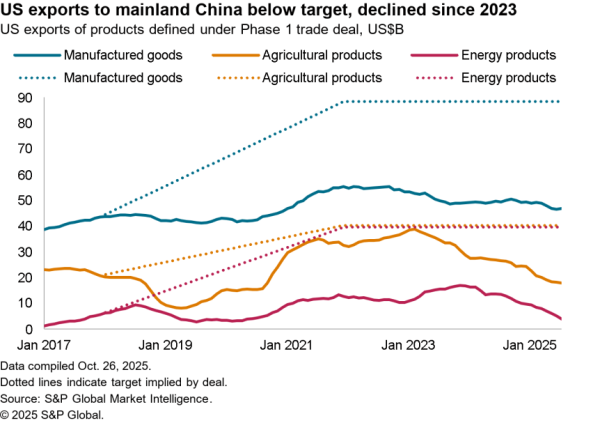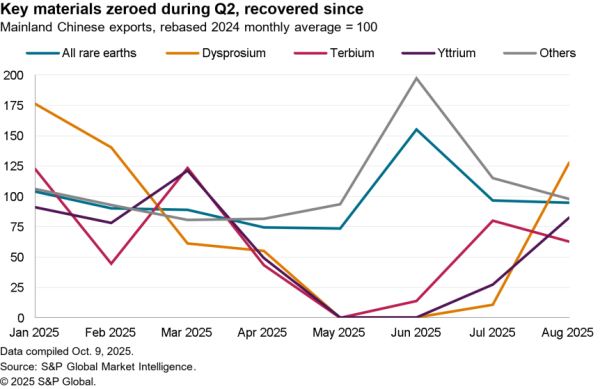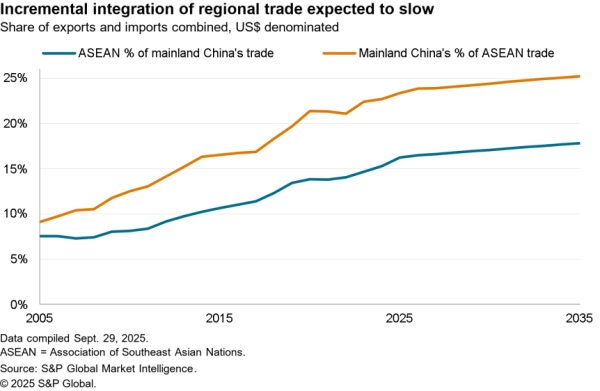The Biden administration’s 100 day review of critical supply chains has yielded detailed policy recommendations across four major sectors including semiconductors, key minerals, large capacity batteries and pharmaceutical ingredients.
In the case of semiconductors the review is timely given the ongoing shortage of supply versus demand that has afflicted industries including the autos sector, as flagged in Panjiva’s May 7 research, as well as computers and capital goods.
There are signs that the imbalance may prove long-lived with Flex’s procurement manager, Lynn Torrel, stating demand will remain high through “mid to late-2022 depending on the commodity“, the Financial Times reports. Others are less concerned, with the Mexico’s autoparts association INA citing a reduction in pressures from July and their end by December according to Reuters.
The supply of semiconductors from China, Japan, South Korea and Taiwan has remained robust, Panjiva’s analysis of official data shows, with combined growth of 24.9% year over year in May and 39.9% compared to May 2019.
Total exports have held at around $36.4 billion to $36.8 billion in the past three months, potentially indicating capacity has been reached. Reports of water shortages in Taiwan may be a constraining factor though exports of $11.93 billion in May compared to $11.4 billion in the prior three months would suggest that has yet to take a toll.

Source: Panjiva
The fixes embedded in the Biden administration’s report are unlikely to provide relief in the near-term.
The most tangible of the seven recommendations, providing at least $50 billion of funding via the CHIPS provisions of the National Defense Authorization Act, is designed to “incentivize manufacturing through federal financial assistance to construct, expand, or modernize semiconductor-related facilities to support semiconductor fabrication” as well as invest in research and development. Both of which will result in investments over years rather than months.
Additionally, and unlike the recommendations regarding critical minerals, the report foresees onshoring rather than securing supplies from allied nations. Indeed, the first opportunity identified is to “foster investment in domestic semiconductor manufacturing“. International cooperation is limited to encouraging “harmonization of export control policies, international research partnerships, and amelioration of supply chain vulnerabilities by establishing a diverse supplier base“. Partnership with Japan, Taiwan and South Korea and competition with China are both specifically mentioned.
Panjiva’s data shows Japan, Taiwan and South Korea already accounted for 20.4% of U.S. imports of semiconductors in the 12 months to April 30. China represented 5.3% down from 10.8% in August 2018 when section 301 tariffs were first applied. Total U.S. imports in April climbed 50.7% year over year and by 38.3% compared to April 2019.
Notably though imports from South Korea, dominated by memory chips, were 0.4% lower in April 2021 versus April 2019 while shipments from Japan were 17.5% lower within a longer-term downturn.

Source: Panjiva
Notably there is little mention of sourcing from or via Mexico, either of semiconductors or their packaged and derived products. The presence of the USMCA trade deal may make it difficult to apply sourcing restraints and may prove counterproductive if manufacturers choose to move more assembly operations to Mexico.
Panjiva’s data shows that semiconductor shipments into Mexico have improved slightly recently, with imports in April being 5.2% higher than the Q1’21 average, which in turn had been 3.3% lower in Q1’21 versus Q4’20. The performance by different importers has been marked though, speaking to the specificity of use cases and product requirements. Shipments linked to Lenovo and Flex climbed 58.1% and 45.6% sequentially while those associated with Wistron and Skyworks were down by 42.6% and 45.2% respectively.

Source: Panjiva




